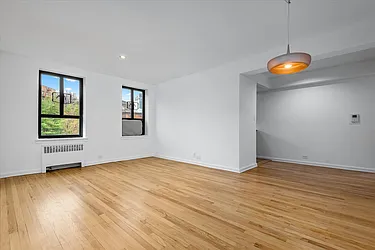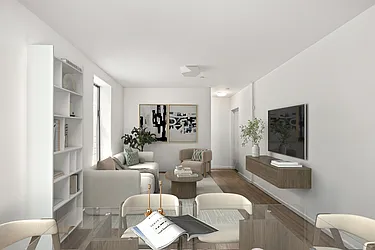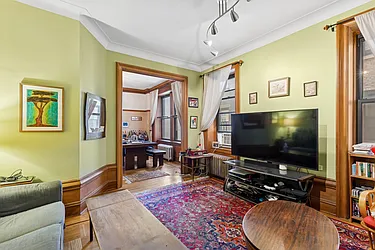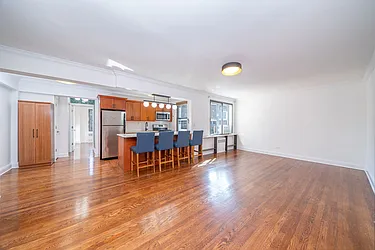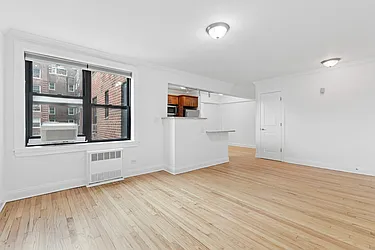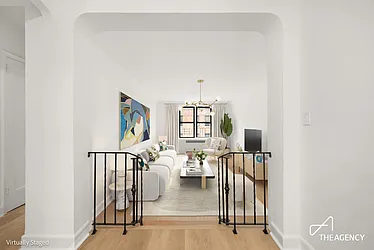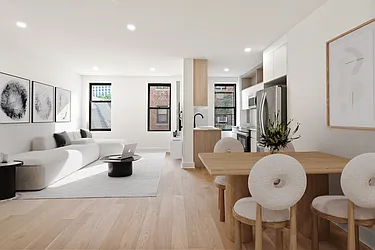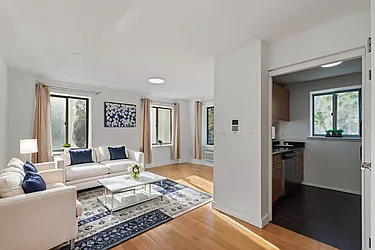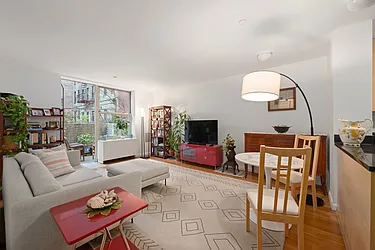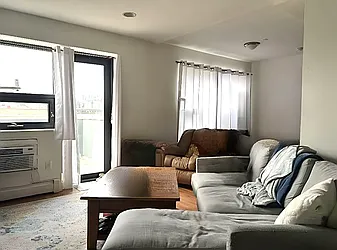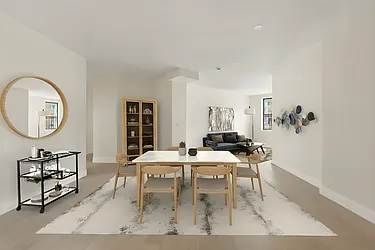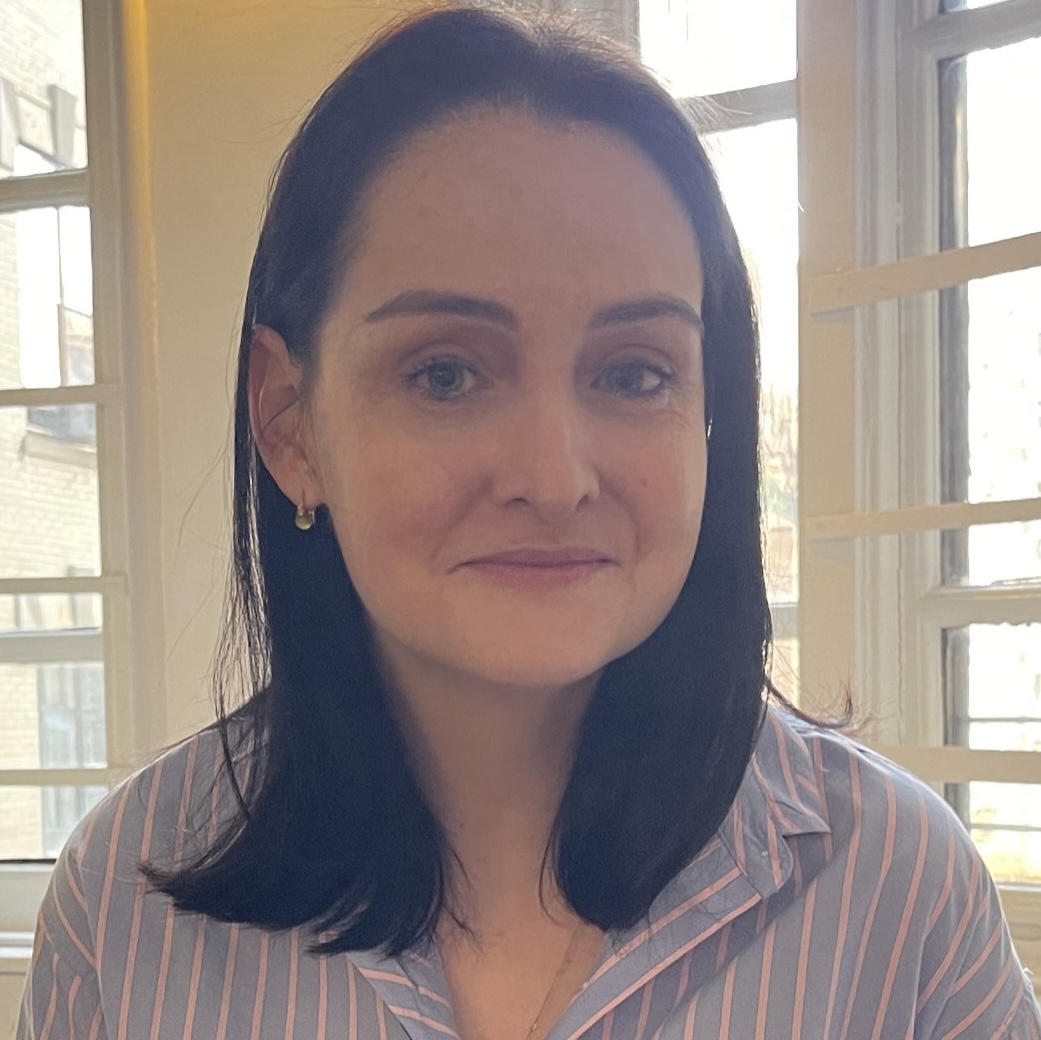
Vivian Ducat, a real estate agent with Halstead, reading “Luxury Apartment Houses of Manhattan: An Illustrated History.”
To NYC real estate agent Vivian Ducat, even a building’s floor tiles tell a story.
There’s a building Ducat knows well in Washington Heights — 790 Riverside Drive, a 13-story co-op known as the Riviera. Each floor in the 1911 building originally had 12 apartments. Many years ago, four large units on every floor — all grand, sometimes 10-room apartments built for when New Yorkers employed live-in servants — were split up into mostly studios and 1-bedrooms. Their long internal hallways were joined together to become part of the building’s public hallways, and were tiled like them.
For some reason, though, the two sets of tiles didn’t quite match. So if you look today, Ducat says, you can see where the original units were, and get a sense for just how spacious and luxurious these homes were designed to be.
“These are the little clues, the secret things that I love to find in apartments,” Ducat says. Her affection for such details stems from a lifelong passion for New York City and its buildings — a passion she has put to work over the last decade as a residential real estate agent for Halstead, working out of its Harlem office.
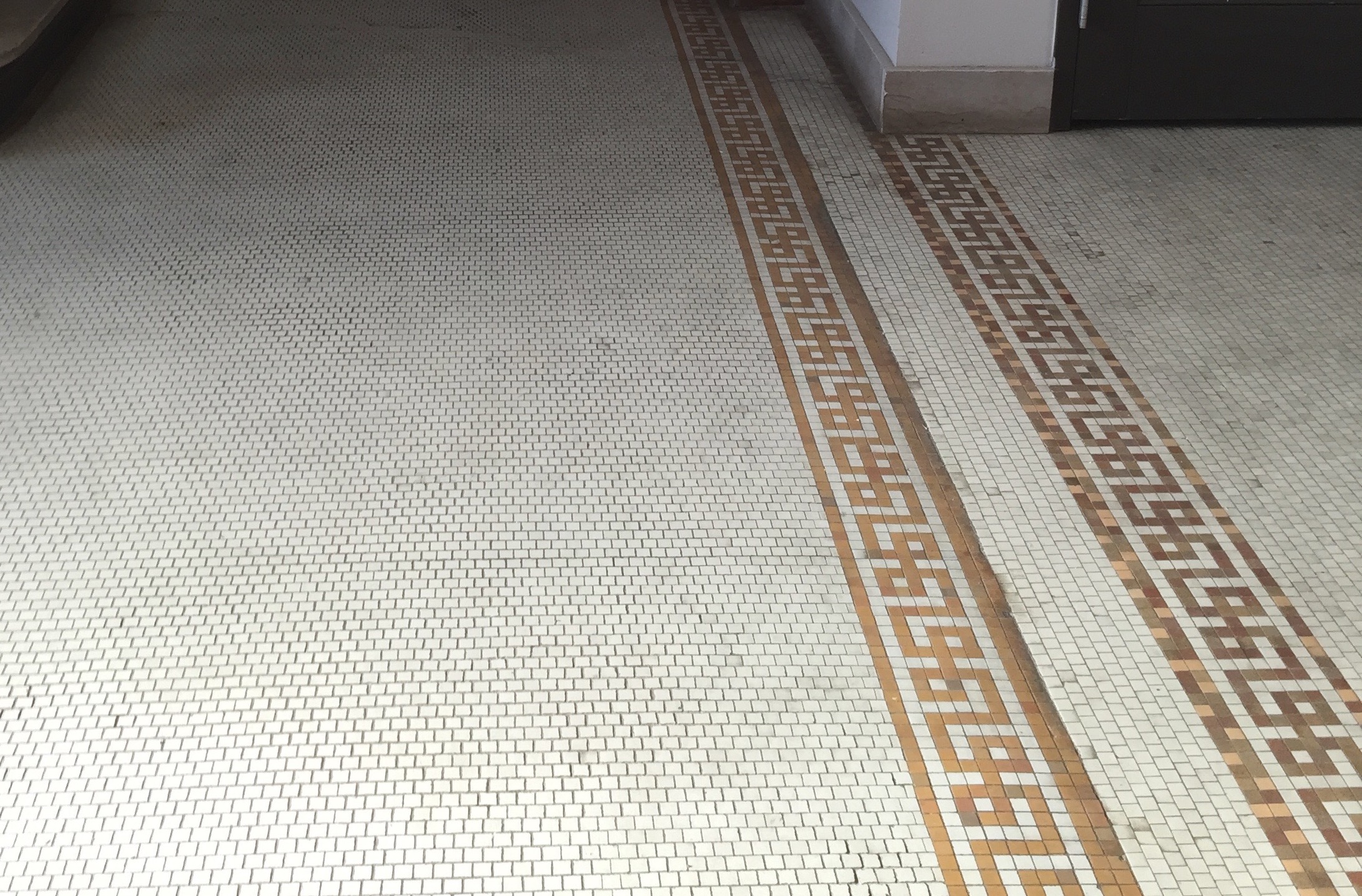
Original floor tiling in the 790 Riverside Drive co-op is on the left. To the right of the patterned line, the tiling is slightly different, indicating where one apartment was divided into two, and a once-private hallway made public. (Vivian Ducat)
This passion makes Ducat one of NYC’s more unusual real estate agents. She visits the Columbia University library to do historic research on the buildings she sells into; her promotional cards include old sepia-tone photos of buildings and city scenes she’s dug up in various archives.
Ducat has a seemingly encyclopedic knowledge of the apartment buildings of Upper Manhattan, where she lives and does much of her work. (She was recognized by StreetEasy last year with an Essy award for championing her community.) Acquiring that knowledge is key to her love of being a real estate agent. “I’m in this in part because I’m really interested in architecture,” she says. “My dream would be to see the inside of every apartment in the city.”
Decoding HDFCs
Working in Upper Manhattan means Ducat has extensive experience with income-restricted, or HDFC co-op buildings, which are more common uptown, and which have their own odd history.
HDFCs were created in the bad old days of New York, when the city took over buildings neglected by landlords and gave individual tenants ownership of their units for as little as $250. A web of restrictions was placed on these newly formed co-ops, including on owners’ income, and these rules still apply today — though to varying degrees, making HDFCs a challenge for buyers and brokers.
Rules on maximum income, for instance, were not designed to address a buyer’s total wealth. And today, as upper-middle-class New Yorkers eye homes in relatively affordable Upper Manhattan, some buyers have vastly more resources than the HDFC program was designed to allow.
“The bureaucrats never imagined that the middle class would want to live in some of the neighborhoods the HDFCs are in,” Ducat says. Sometimes, it turns out they don’t: “You do get people who want the value, the cheapness, and then they’re turned off because they’re not really open to living side-by-side with people from a very different socioeconomic [background].”
Article continues below
A Childhood Fantasy
As a New York native, Ducat knows what she sells. She was born on the Upper West Side to an Austrian-Jewish father and a German-Jewish mother who had both escaped the Holocaust. Even as a child, growing up on West 72nd Street between Riverside Drive and West End Avenue, Ducat would habitually read the real estate ads in The New York Times, which then advertised cheap lodging in the many rooming houses in the neighborhood.
Her parents sometimes had “horrible fights,” she says, and when they did, “I would sit at my parents’ windowsill, looking north up at the river, imagining I’d rent this one, rent that one. I could escape in my mind and in my fantasies by reading real estate ads.”
Ducat later attended Harvard, studying archaeology and Chinese, and went on to direct award-winning documentary films for the BBC and other TV networks. (She still has an IMDB page.) She ended up working at Columbia University, where she studied part-time for a master’s in real estate development. Her thesis explored the dividing up of Manhattan apartments in the 1930s — an era recalled by those mismatched floor tiles.
Moving Uptown
In the 2000s, seeking more space for her and her sons Oscar (now 24) and Hugo (now 19), Ducat moved from a tight 2-bedroom on the Upper West Side to a grand Beaux-Arts co-op on Riverside Drive near West 157th Street. Uptown, she found a neighborhood more like the Upper West Side of her youth, before it had fully gentrified.
She has mixed feelings about the changes taking place in areas like Hamilton Heights today. “I still remember when my parents were so excited about any restaurant opening on Amsterdam or Columbus,” Ducat says. “I feel like I’m reliving my past … Every time there’s a new restaurant opening [in my neighborhood], it’s like I gotta go try it out. There was such a dearth of stuff up here for the longest time.”
But Ducat also mentions the lofty price of real estate on the Upper West Side today, and the presence of so many national chain stores in her old neighborhood: “You have to be careful what you wish for.”
Ducat’s Advice for Buyers
With the local real estate market shifting, Ducat believes it’s a good time to buy. “There’s more stuff out there, the prices are relatively good, the rates are relatively low. If you’re going to buy, it just seems like this is the down end of a long cycle,” she says.
We asked Ducat for a few tips for those shopping for a home in New York City. Here’s what she said:
-
Go see listings that appeal to you, even if they are priced slightly higher than what you want to spend.
-
Push the limits of your comfort zone when you identify neighborhoods in which you would consider living.
-
Just because you can look up listings yourself on search engines like StreetEasy does not mean that you do not need the services of an agent or broker. Sales and rental transactions can be complex, and having a guide and an advocate has great value.
-
Get your paperwork together — your preapproval and your financial form for a sale, or your taxes, landlord letter and bank statements for a rental — even before you begin seriously looking. You never know when you will find your dream apartment, and you may lose out against other more prepared fellow seekers.
—
Hey, why not like StreetEasy on Facebook and follow @streeteasy on Instagram?

